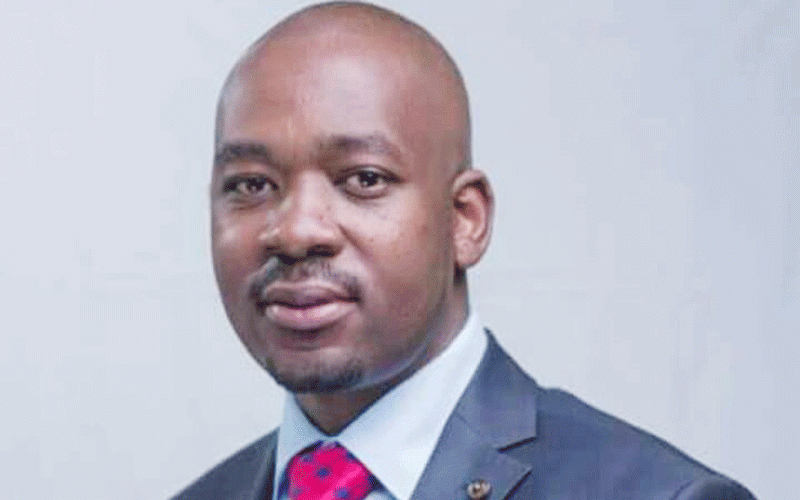
THE announcement that a statue for Mtshane Khumalo is going to be erected was sweet music to Yours Truly’s ears who in the past has been clamouring for greater recognition for such yesteryear heroes.
BY Burzil Dube
According to media reports, President Emmerson Mnangagwa revealed that government was in the process of coming up with a statue for the Matabele military tactician whose heroic prowess during the Anglo-Ndebele war of 1893-94 was a cause for concern to early settler forces.
This revelation on the statue status was announced at the launch of the Culture Week commemorations at Chief Njelele’s homestead in Gokwe recently.
It was also repeated during the unveiling of the Mbuya Nehanda statue in Harare.
Mbuya Nehanda is considered to be the first heroine as well as spirit medium, who during her heyday was in the forefront of vigorously resisting colonial settlers during the First Chimurenga/Umvukela of 1896-97.
This piece of culture will certainly add some impetus to the country’s historical tourism industry, which is yet to fully recover from the Covid-19 pandemic that has seen most hospitality facilities closing down due to lack of business.
The same might also apply to Mtshane Khumalo’s figurine, which Yours Truly advocates for its unveiling at Matopos Hills where the remains of other prominent settlers whom he used to cross paths with are interred.
- Chamisa under fire over US$120K donation
- Mavhunga puts DeMbare into Chibuku quarterfinals
- Pension funds bet on Cabora Bassa oilfields
- Councils defy govt fire tender directive
Keep Reading
Cecil John Rhodes, Leander Starr Jameson and Major Allan Wilson are among some of the pioneer luminaries buried at the above-mentioned iconic hills which have proved to be a major tourist resort area. Who was Mtshane Khumalo to deserve such a national accolade?
Before delving into the heroic deeds of this great Matabele general whose army was a thorn to early settler colonial forces, Yours Truly will rewind on how the Battle of Pupu came into being.
This is part of efforts to bring the point home on why Khumalo’s edifice deserves to be at the World’s View as part of historical tourism, which is yet to be fully utilised.
World’s View is another name for the area where the likes of Rhodes, Jameson and Wilson among others are buried and it is a vintage tourist observation point for the mountain scenery. Its other name is Malindidzimu.
Back to the gist of this column as it is being rewinded. When King Lobengula heard that the Matabele warriors had lost the Battle of Mbembesi or Gadade against early colonial forces, he ordered the burning-down of his palace in Bulawayo and fled westwards.
He fled with his regiments, which included Ingubo, Nsukamini and Imbizo whose commanders vowed to protect their king at all costs.
The Battle of Gadade is considered to have been the turning point of the Matabele Kingdom as the fiery warriors relaunched their military onslaught on the advancing Pioneer Column. This happened on November 1, 1893.
They adopted their familiar cow-horn formation.
IHlathi, INsukamini, INqobo, ISiziba and INduba formed the right flank and led the attack. UMcijo, Amavene, uJinga and INxa formed the left flank.
IMbizo and INgubo, the crack Matabele regiments, formed the military epicentre of the entire campaign.
They were commanded by Generals Mtshane Khumalo, popularly known as uNdindikuyasa, and Fusi Khanye respectively.
Leander Starr Jameson, one of the prominent leaders of the invasions, was reported to have expressed bewilderment at what he witnessed at Gadade when the colonial invaders clashed with the Matabele warriors:
“The pluck of iMbizo and INgubo regiments was amazing…No troops anywhere in the world could have fought and withstood such terrific fire as was unleashed for half as long as the Matebele took it…hour after hour they kept coming
“The amajaha fought extremely bravely in defence of their land, their king, their sovereignty, their nation, their dignity and pride as amaNdebele.
“They fought until they blocked the nozzle of the Maxim gun with their leather aprons (amabhetshu) after spearing to death the operator of the machine.
“Alwa amabutho enkosi aze awuvala umlomo wesigwagwagwa ngebhetshu” (Hudson Halimana ZTV, August,1992)
As to what happened after this particular epic battle is everybody’s guess and this has also resulted in the Zimbabwean government bestowing General Mtshane Khumalo national hero status.
The same also applies to the final battle place between the Matabele and early settler forces in Pupu near Lupane that has since been designated a national monument. The famous Pupu Battle happened from December 3 to 4 1893 when the Shangani Patrol under Major Allan Wilson were on a specific mission to capture the fleeing Matabele king.
The Shangani Patrol was a 34-soldier unit comprising of Mashonaland Mounted Police and Bechuanaland Border Police, who crossed the Shangani River on December 3. The patrol moved to Lobengula’s place the following morning where they were ambushed by more than 3 000 Matabele warriors near the king’s wagon.
It is reported that the Matabele warriors offered Wilson’s men their lives if they surrendered but the settler forces refused to give up and what followed is everyone’s guess.
They were annihilated by the warriors, who attacked from both sides and died fighting until ammunition ran out including Allan Wilson who was the last man standing to be killed by the Matabele army.
General Mtshane Khumalo ordered that the bodies were to be left untouched even though clothes and two of the facial skins were taken to King Lobengula as proof of the battle’s outcome.
- Comments always welcome on: [email protected] or Twitter@DubeBurzil










